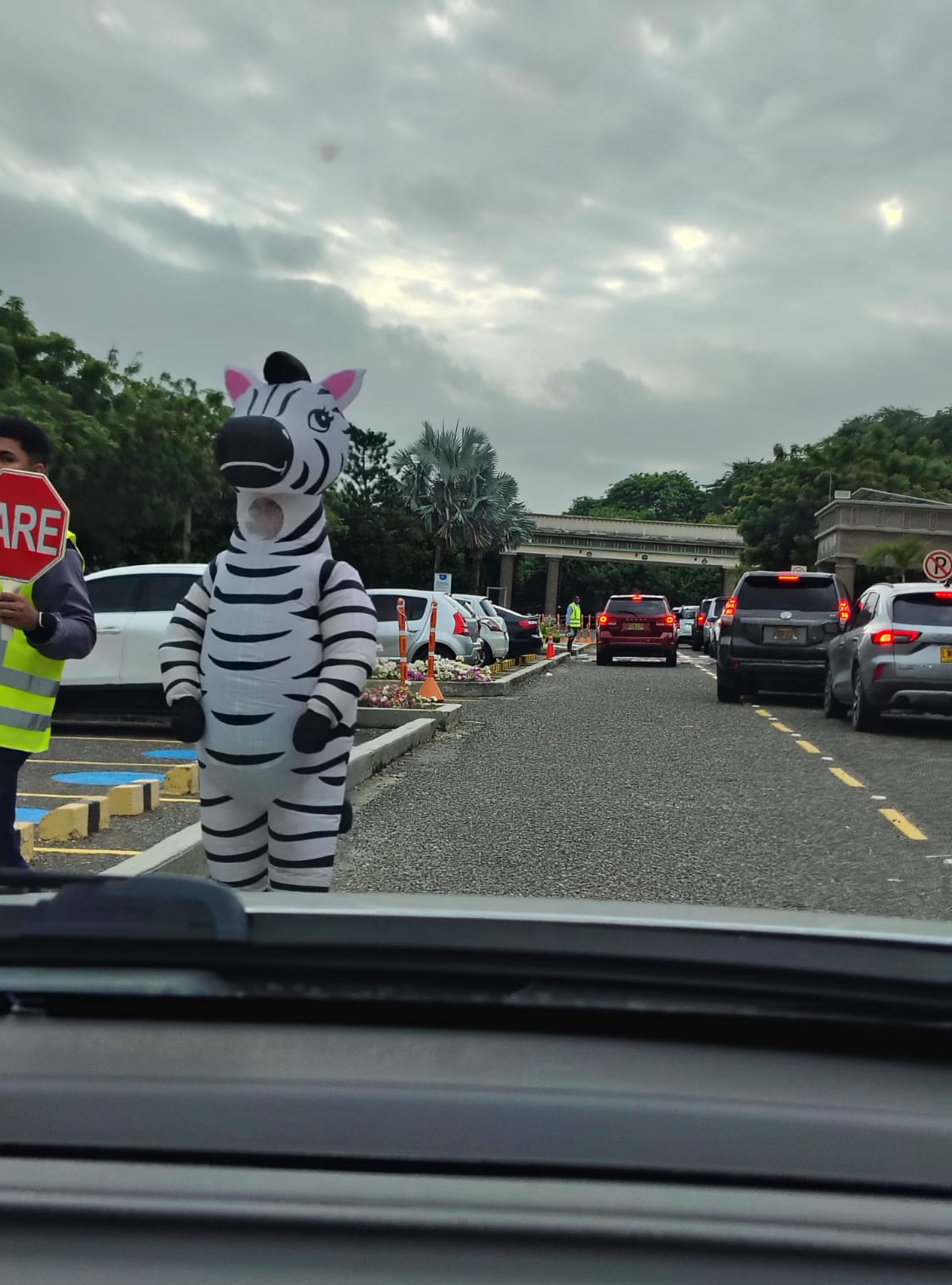La mañana del 17 de septiembre, al llegar al Colegio Alemán de Barranquilla, presencié una escena inusual: un estudiante vestido de cebra, acompañado por otro con señal de “PARE”, organizaba el cruce peatonal frente a la institución. Esta intervención forma parte de una iniciativa escolar que busca enseñar a los estudiantes y a la comunidad a respetar las cebras y promover la movilidad segura.
El proyecto pedagógico incluye señalización horizontal en diversos puntos del campus para que los niños se acostumbren desde pequeños a caminar con autonomía y usar correctamente los cruces. También promueve que los propios padres y docentes den ejemplo utilizando las cebras para desplazarse, en lugar de cruzar por cualquier parte.
A pesar de los esfuerzos, persisten debilidades en la implementación. Algunas demarcaciones están deterioradas y varios conductores —incluidos algunos padres— no respetan los cruces, se detienen encima de ellos o no ceden el paso, lo que pone en riesgo a los peatones. La labor del estudiante disfrazado de cebra recuerda a programas exitosos en ciudades como La Paz (Bolivia) y Quito (Ecuador), donde estas figuras han humanizado el tránsito y fomentado una cultura de respeto.
La experiencia del Colegio Alemán se inspira en el modelo educativo de Alemania, país donde los niños reciben formación vial desde la infancia. A partir de los 6 años se les enseña a ir caminando al colegio de forma independiente, con rutas seguras identificadas por las familias y reforzadas por programas escolares.
Además, a partir de los 9 o 10 años, muchos niños alemanes se preparan para obtener una “Fahrradführerschein” o licencia de conducción de bicicleta, tras exámenes teóricos y prácticos impartidos en colaboración con la policía local.
Replicar estas prácticas en ciudades como Barranquilla requeriría un compromiso público sostenido para mejorar la infraestructura peatonal, formar agentes de tránsito con enfoque pedagógico, implementar campañas de educación ciudadana y, sobre todo, transformar la mentalidad colectiva sobre el rol del peatón en el ecosistema urbano.
Algunos dirán que es impensable que esto se dé en Colombia, pero al menos se trata de diseñar un plan para que los niños muy pequeños hoy sean la generación que crezca con nuevas costumbres. Dentro de unos 20 años podríamos ver los frutos en la cultura ciudadana y en otros aspectos del estilo de vida, con beneficios reales para toda la sociedad.
